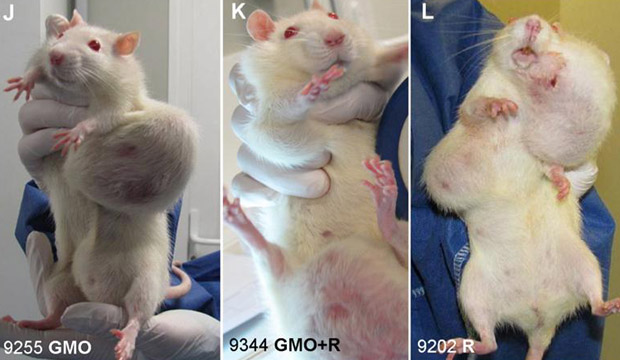Just months after a study was published showing that two Monsanto products, a genetically modified (GM) maize and Roundup herbicide, damaged the health of rats, the journal that published the study appointed a former Monsanto scientist to decide which papers on GM foods and crops should be published, a new article reveals.[1]

Monsanto and GM foods suffered a storm of bad publicity after a study published in the journal Food and Chemical Toxicology (FCT) in September 2012 reported that a GM corn and Roundup caused organ damage and increased rates of tumors and premature death in rats.[2]
But in early 2013 Richard E. Goodman, a former Monsanto researcher with close ties to the biotech industry, joined the senior editorial staff of FCT. Goodman was given the specially created position of associate editor for biotechnology.
Claire Robinson, research director at the science policy platform Earth Open Source and co-author of the new article, said, “Goodman’s fast-tracked appointment straight onto FCT’s upper editorial board raises the question of whether Monsanto is now effectively deciding which papers on GM foods and crops should be published and which should not.”
The article explains that Goodman’s appointment is just the latest in a long series of episodes in which people with interests in the agricultural biotech industry have attempted to control or prevent the publication of inconvenient research.
In other cases, the pages of scientific journals were given over to extraordinary attacks on scientists whose research revealed problems with GM crops and foods. Often, the critics did not disclose their conflicts of interest with the GM industry, and the journals failed to make them do so.
Dr Jonathan Latham, executive director of the nonprofit Bioscience Resource Project and co-author of the new article, said, “Unfortunately, the public and the scientific community can no longer trust that peer-reviewed journals reflect the true state of scientific knowledge. Some journals have become a vehicle for a narrow interest group – biotechnology corporations – to control scientific discourse.”
Robinson and Latham note that the crisis in scientific publishing reflects the wider problem that scientific research is increasingly dependent on industry funding. Latham said, “Conflicts of interest have become the defining problem of modern science and limiting them amongst public sector scientists has become a fundamental necessity.”
The authors challenge scientific journals to level the playing field and apply the same critical standards to studies that conclude that GM foods and crops pose risks as to studies that conclude safety. They should also publish all conflicts of interest among their editorial staff.
If journals fail to reform, scientists who carry out public interest research may need to create an alternative publication model: public peer review, or ‘open source science’.
Notes
1. Claire Robinson and Jonathan Latham, The Goodman affair: Monsanto targets the heart of Science. Independent Science News and Earth Open Source. 20 May 2013. http://independentsciencenews.
and http://bit.ly/189Ff88
2. GE Séralini et al. (2012). Long term toxicity of a Roundup herbicide and a Roundup-tolerant genetically modified maize. Food and Chemical Toxicology 50(11): 4221-4231.
Contact: Claire Robinson claire.robinson@
Research director, Earth Open Source
Tel: +44 (0)752 753 6923 (UK)
Jonathan Latham, PhD jrlatham@bioscienceresource.
Executive director, Bioscience Resource Project
Tel: +1 607 319 0279 (USA)

















I am surprised that Seralini’s research continues to be cited when it was disqualified by several scientists due to serious problems in his research design.
Seralini’s study followed Monsanto own testing protocol and was also the longest ever study done on GMOs and Roundup – it is in fact the most complete study ever done on both – Please check out http://www.gmoseralini.org for the facts. Over 500 top scientists from around the World have supported the research and it is peer-reviewed.